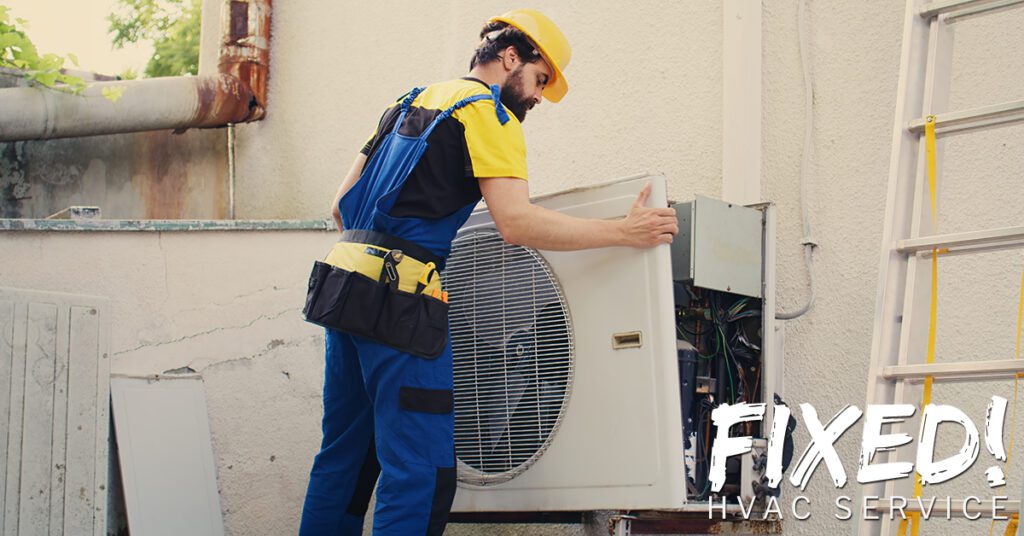
The temperature outside is climbing, but so is the temperature inside, and you’re panicked!
A simple air conditioner repair might be the solution. With a summer of plans, parties, and vacations, no one wants to spend a small fortune on an unplanned air conditioner replacement! Although sometimes necessary, you may be able to repair your heating and air conditioning system. Here are some of the most common air conditioner repairs to learn more about.
Failed Capacitor
Likely the most common air conditioner failure, it is a minor problem. If your thermostat is working correctly and the air is blowing from your vents, but it’s not cold, find your outside unit to see if it’s working. If a buzzing or humming noise comes from the outside unit, but nothing is turning or blowing, your capacitor could have failed.
Capacitors help the electric motors in your air conditioning system start up and continue to run. They boost energy during the initial starting phase to get the motors up to speed. Over time, capacitors weaken and, if not replaced, give out. Once this happens, they are useless and sometimes cause other issues inside the unit.
Low Refrigerant
The refrigerant in your air-conditioning system is the medium in which heat is transferred from inside of your home to the outside. If the refrigerant is too low, the system may struggle to keep up, potentially freeze, and ultimately not cool your house efficiently.
Slow refrigerant leaks are the most common, and the symptoms become more pronounced over time. If you notice your air conditioning running longer and the temperature on your thermostat becoming more challenging to achieve, a leak could be the problem.
Adding more refrigerant to your system is easy enough, but that won’t fix the leak. There are diagnostic procedures for locating refrigerant leaks such as pressure testing, electronic leak detection, and the addition of ultra violet dye that allows technicians to later identify the source of any refrigerant leaks after the dye has had time to circulate through the system. The procedure used will be dependent on your particular situation.
Clogged Condensation Drain
As your air conditioner cools your home, it also dehumidifies it. The process of cooling the air also removes moisture, which has to be caught and drained properly outside your house.
Over time drain lines can and do become clogged with dirt, debris, and biological material. It is important to have these drain lines cleaned regularly. If they do clog, they can be at minimum an inconvenience, and at most be destructive to your home.
Some units are installed with secondary drain pans, allowing a secondary method for controlling water if the primary drain line clogs. These drain pans often contain a switch to cut off the unit when they fill up for safety purposes. When the safety switch is triggered, the thermostat may turn off depending on how it was wired. The blower and thermostat may remain on, but the condensing unit will turn off. Either way, the clogged drain line needs to be cleared and secondary pan drained.
Damaged Blower Motor
Your blower motor moves the air inside your home/ductwork. Blowers are often in hot or humid areas and sometimes don’t get the necessary maintenance, including lubricating or removing dirt and debris. If you notice a loss of airflow on the inside of your home, hear a grinding or banging noise from the indoor portion of your heating and air conditioning system, it is time to call a professional.
Air Conditioner Repairs Help
As tempting as it may be to self-diagnose or repair an issue with your air conditioner unit, this job is for a trained professional who knows what they are looking for. FIXED! HVAC professional service technicians are knowledgeable and available to help safely. A professional will guide you to the source of the issue and the best course of action to get you feeling cooler sooner.

